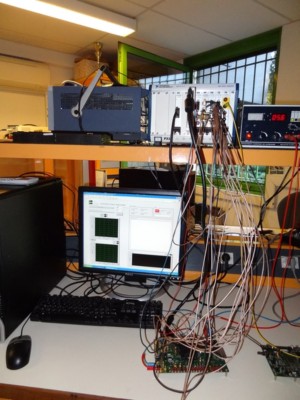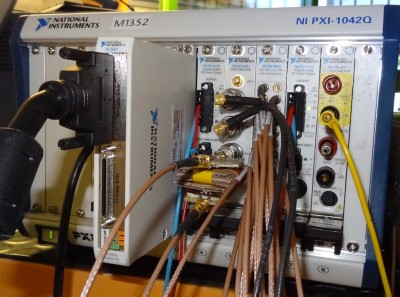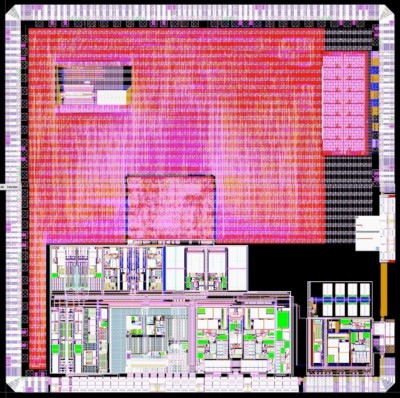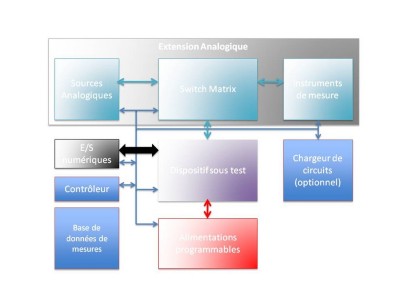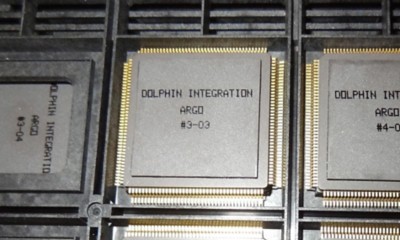Using LabVIEW and PXI for an Automated Test Bench for High-Resolution Audio Test
Christophe GAILLARD, Dolphin Integration
"We wrote the sequencing of the various test modules directly in LabVIEW, with a data log file generated for each circuit. The current test time is less than 10 minutes per circuit. In manual mode, the same tests required between six and eight hours."
- Christophe GAILLARD, Dolphin Integration
The Challenge:
Designing a test bench for an automated high-resolution audio codec that integrates analog-to-digital converters and digital-to-analog multichannel converters.
The Solution:
Developing a modular solution based on NI PXI instruments to multiplex analog signals, generate and acquire analog and digital signals, and control components via I2C bus.
At Dolphin Integration, we design mixed-signal microelectronic components sold in the form of virtual components, which are IP blocks licensed to our customers for integration into their System-On-Chip (SoC) These circuits include an analog portion that provides the interface with devices from the application (such as analog and digital microphones, speakers, and headphones) as well as analog-to-digital (ADC) and digital-to-analog (DAC) audio signal conversions. This analog front-end is associated with complex logic (hundreds of thousands of gates) and features digital filtering of audio streams and component control through its internal registers.
Characterizing Test Components
Qualification of the components involves the design and electrical characterization of test circuits manufactured in submicron complementary metal–oxide semiconductor technologies (40 nm and below). We need a relatively large number of samples to explore the technological variances (the “corners” in microelectronics jargon), drifts in temperature and power supply voltage, and the tolerance to electrostatic discharge (ESD).
We compare these measurements with simulation results obtained by the mixed-signal simulator we created called SMASH. This final comparison is at the heart of the Virtual Fab Process (VFP) we use to produce robust circuits thanks to simulations, taking into account the variability related to the manufacturing process and the environment.
High-Performance Audio Applications
Test circuits contain functions including high-resolution audio with analog to digital converters (ADC) and digital to analog converters (DAC) featuring a high signal-to-noise ratio of 100 dB+ and linearity better than 0.003 percent. These characteristics require attention during the specification and design of the tester because the noise-measuring instruments must be less than 20 μVrms in the desired band.
Moreover, the circuits include many input and output channels with variable gain amplifiers. The audio component provides several possible configurations, by means of programming, for routing and mixing audio streams between its inputs and outputs, both digital and analog. There are many possible paths for signals, each with its own functional specification and performance to characterize.
Imperative Automation
The tester subjects each circuit to more than 120 tests, accounting for environmental variables and multiple functional configurations, with more than 2,300 measurements for a full qualification campaign. In these conditions, it is not possible to manually manage the tests for reasons of productivity and measurement quality.
The basic principle for bench automation is no manual intervention on the card or the bench during the measurements. To do this, we must multiplex the various analog resources, generators, and acquisition tools to adapt to the functional configuration under test. In addition, we must calibrate all instruments to not use manual adjustments, for example, adjust the input level to fit the gain of the channel under test.
PXI Instrumentation Including FPGA
The test bench, which is based on the NI PXI modular architecture, includes a PXI chassis with a MXI interface. The NI PXI-2593 switching matrix multiplexes analog channels, while an NI PXI-4461 module generates and acquires the analog signals. The bench has an NI PXI-4110 power supply and an NI PXI-4071 multimeter.
The control of the component by its I2C interface and management of the I2S interface for digital audio data are implemented on an NI PXI-7952R FPGA module for NI FlexRIO, which integrates an FPGA circuit. The programming in LabVIEW FPGA offers direct integration of VHDL hardware description language modules developed for the component itself, ensuring a safe and rapid integration into the test solution.
Faster Test
We wrote the sequencing of the various test modules directly in LabVIEW, with a data log file generated for each circuit. The current test time is less than 10 minutes per circuit. In manual mode, the same tests required between six and eight hours.
The data is directly imported and automatically processed to generate a preformatted measurement report.
Author Information:
Christophe GAILLARD
Dolphin Integration
BP 65 – Inovallée
38242 Meylan
France
Tel: +33 (0)4 76 41 74 15
Fax: +33 (0)4 76 90 29 65
cga@dolphin.fr
